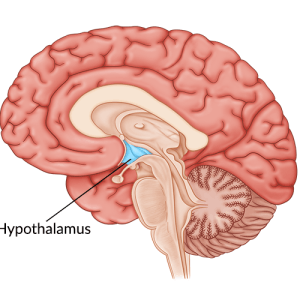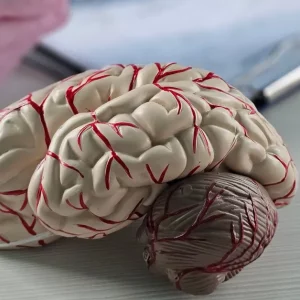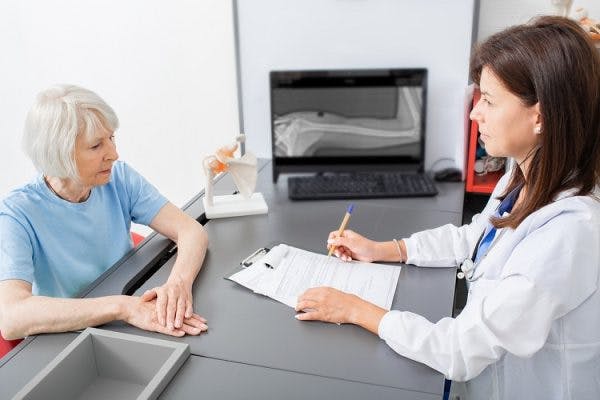Every brain injury is unique, which makes it challenging to predict one’s chances of recovery. Many factors are involved in determining one’s recovery outlook after TBI, including the severity of injury, age, prior functional levels, and the onset of secondary complications. Fortunately, even with the most severe cases of brain damage, there is always a chance to recover.
To help you better understand recovery outlook after brain damage, this article will share:
- Chances of recovering from brain damage
- Factors that influence brain damage recovery chances
- How the brain recovers after traumatic brain injury
- How to increase chances of recovery after TBI
Understanding the Chances of Brain Damage Recovery
A person’s chances of recovery after TBI heavily depend on the severity of their injury. Generally, the more severe the brain damage is, the lower an individual’s chances of making a functional recovery are. This is not always the case, but it’s the general outlook.
One way to measure the severity of brain damage after TBI is through the Glasgow Coma Scale (GCS). It assesses how conscious a patient is after brain injury based on their eye-opening, motor, and verbal responses. Patients are assigned a score between 3-15. Higher GCS scores are associated with greater consciousness and less severe head injury, which generally suggests better chances of brain damage recovery. However, even after severe brain injuries, recovery is possible.
According to one comprehensive study of 189 patients with a GCS score of 3, 13% achieved a good functional outcome after six months. While this may sound discouraging at first, it’s actually remarkable news considering that the patients started with no consciousness and were only studied for 6 months.
In a separate study that followed patients with severe TBI for four years, 28% achieved a full recovery, and 79% were living independently with only minimal assistance.
Other sources show slightly better odds. According to statistics gathered from the TBI Model System Program regarding individuals with moderate to severe brain damage, at two years post-injury:
- 30% of patients need at least some assistance from another person. 70% live alone full-time.
- Over 90% live in private residences.
- 50% of patients learn how to drive after brain injury, though there may still be restrictions on driving at night or for long distances.
- 30% have a job, though it’s usually different from what they had before their injury.
This demonstrates that even after the most severe brain injuries, recovery is possible. In the following section, we’ll discuss other crucial factors that play a role in predicting recovery outcomes.
Factors that Influence Recovery Chances
While the severity of brain damage plays a major role in predicting recovery outlook after TBI, it is not the only factor involved.
Other factors doctors may look at to predict brain damage recovery chances include:
- Duration of coma. The less time a patient is in a coma after brain injury, the better their chances of a good recovery.
- Post-traumatic amnesia. When the person emerges from a coma, they go through a period of amnesia and confusion. Sometimes this period only lasts a few hours, but typically it lasts days or even weeks. The shorter the amnesia lasts, the better the prognosis.
- Age. In general, TBI patients over the age of 60 or under the age of two have the most limited chances of recovery.
- Pupil reactivity. More reactive pupils (i.e., if they constrict when exposed to light) are associated with greater functional recovery.
- Location of injury. Chances of recovery are generally higher for those with focal head injuries than diffuse head injuries because damage is limited to one area of the brain as opposed to multiple areas.
- Pre-existing health conditions. Individuals with a prior history of health conditions like anxiety, depression, headaches, and seizures generally require more time to recover from brain injury.
- Secondary effects. Secondary effects of brain damage such as personality changes, sleep problems, and chronic pain may interfere with one’s motivation to pursue recovery.
- Motivation. Recovery outcomes are best when the individual is highly motivated to pursue recovery.
Because so many factors can affect brain injury recovery, every individual will have a unique prognosis. Generally, the earlier individuals participate in rehabilitative therapies, the better the outcomes. Up next, we’ll discuss the mechanisms involved in promoting recovery after brain damage.
How the Brain Recovers After Traumatic Brain Injury
To improve your chances of recovery after brain injury, it’s essential to understand how the brain recovers. Damaged neurons (nerve cells) in the central nervous system are not capable of regenerating. As a result, physical damage to the brain is permanent.
However, the brain is also incredibly adaptive and can reorganize its circuitry through a mechanism called neuroplasticity. This means that functions affected by brain damage have the potential to be recovered by healthy, undamaged regions of the brain.
The best way to activate neuroplasticity is through repeatedly practicing the functions you want to recover. Consistent practice stimulates the brain and reinforces demand for that function to promote neurological adaptations. The more you practice, the stronger these reorganized connections become.
By utilizing neuroplasticity, many individuals with brain injuries regain abilities they thought were permanently lost. In the following section, we’ll discuss interventions that can help promote brain injury recovery.
Methods to Increase Brain Damage Recovery Chances
Utilizing a combination of various rehabilitation methods can promote better chances of brain damage recovery. Because traumatic brain injuries can affect a wide variety of cognitive and motor functions, a personalized approach to recovery that identifies and targets each individual’s weaknesses is ideal.
Commonly used practices to improve recovery outcomes after brain injury include:
- Physical therapy. Physical therapy focuses on improving motor control through targeted exercises. A physical therapist will make sure the exercises are the right difficulty level and targeting the correct muscles.
- Occupational therapy. Occupational therapy helps individuals develop their ability to perform daily tasks independently. Patients may learn how to use adaptive tools or alternative methods to be as functional and independent as possible.
- Speech therapy. Individuals who experience speech and language difficulties after TBI can learn how to develop these skills or alternative ways to effectively communicate at speech therapy. Furthermore, speech therapists can assess and treat cognitive challenges as well as eating and swallowing difficulties that may occur following TBI.
- Cognitive-behavioral therapy. Individuals who experience difficulties with emotional regulation or mental health may benefit from cognitive behavioral therapy. There, they will learn how to identify problematic behaviors and how to successfully manage them.
- Carrying over rehabilitative activities. To get the best out of your rehab, it’s essential to practice the exercises learned in rehabilitative therapies at home every day. This will help keep your brain stimulated, which will increase your chances of a full recovery.
- Increasing physical activity. Being active, especially outdoors, can not only increase your physical health, but can also improve your emotional and cognitive health and wellbeing.
- Making dietary adjustments. Making healthy changes to your diet will help improve energy levels, performance, and overall health for optimal recovery.
Rehabilitative therapies will provide you with helpful guidance to promote recovery, but it’s ultimately up to you to continuously practice those exercises and activities to optimize your outcomes. The more you practice, the more your brain will adapt, and the better you’ll get.
Boosting Your Brain Damage Recovery Chances: Key Points
It is vital to remember that statistics and figures about brain damage recovery chances are not definitive. Even when the odds look grim, it’s always possible to achieve a good recovery.
There are dozens of severe brain injury recovery stories where patients defy all expectations and surprise their doctors with their progress. And in each case, it was because the person ignored negative predictions and persevered with therapy.
We hope this article helped you better understand the various factors involved in determining one’s chances of recovering from brain damage and how to increase your odds.










